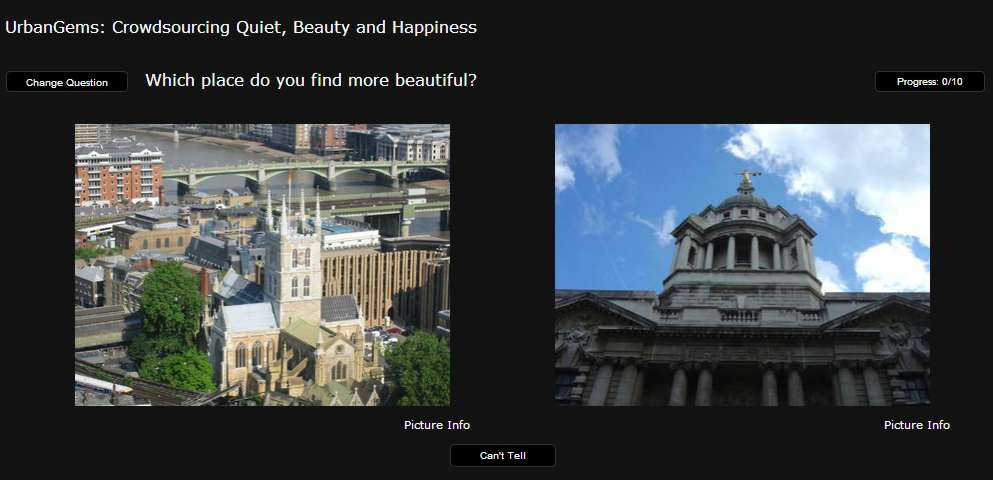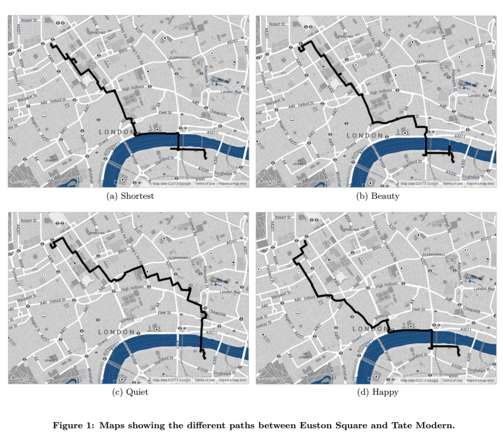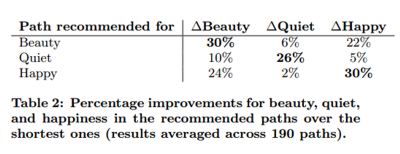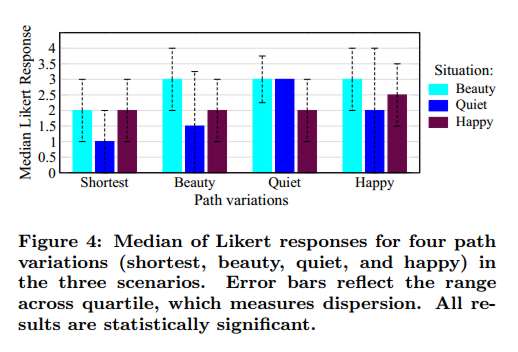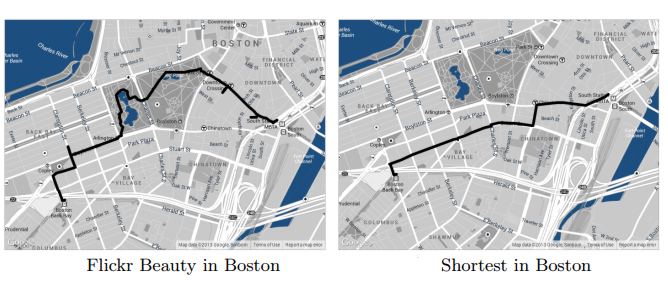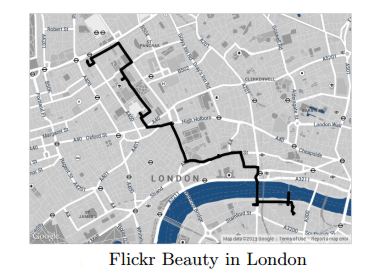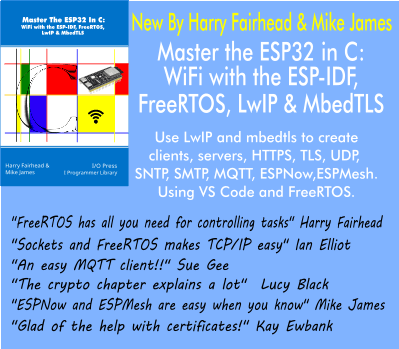| Finding Beautiful Walking Routes |
| Written by Janet Swift |
| Saturday, 19 July 2014 |
|
Yahoo researchers are working on an alternative approach to providing directions to pedestrians. Instead of simply the shortest route, they want to suggest routes that are both short and pleasant. In research carried out at Yahoo Labs in Barcelona and using London and Boston as their test cases, Daniele Quercia, Luca Maria Aiello, Rossano Schifanella are investigation how web and mobile mapping services could automatically suggest routes that are "emotionally pleasant". The first step in the research study was to quantify the extent to which urban locations are pleasant. To do this they used data from UrbanGems, a crowd-sourcing platform that asks users to compare pairs of photographs and vote on which one looks "more beautiful" or "more quiet" or "makes you happier".
The researches used the responses of 3,301 participants to create alternative routes between London's Euston Square and the Tate Modern art gallery to optimize the qualities "Beauty", "Quiet" and "Happy" using statistical methods.
In evaluating the recommended paths the researchers looked at the percentage improvements in the three alternative paths compared to the shortest ones and found increases that went from 26% to 30% in the salient dimensions:
The then looked at whether the recommended paths were considerably longer than the shortest ones and found that, on average, they were only 12% longer. Finally 30 Londoners familiar with the area assessed the paths , without knowing which was which and the consensus was that the alternative routes were more beautiful than the shortest:
The final stage of the study used Flickr metadata. This enabled it to both go beyond crowd-sourced data and beyond London. The researchers comment that American cities "tend to offer urban situations far more diverse in terms of safety and beauty" than European cities and chose Boston as its example. Flickr-derived beautiful paths for Boston are quite a lot longer than the shortest routes but are on average are 35% more beautiful.
The researchers recruited 54 people to compare a Flicker-derived path form Back Bay Station to South Stations which confirmed that their algorithm had found an alternative that was perceived as beautiful.
The Flicker-derived path for London had a mixed reception with women and those who are relative newcomers to London rating it more highly than men and longer-term residents. At the end of their paper the researchers point to further work: Viewing a path (no matter how familiar it is) does not capture the full affective experience of ‘being there’. In the future, we will build upon the analysis presented here by designing a mobile application and testing it in the wild across different cities in Europe and USA.
I wonder if the travelling salesman problem has a beautiful solution? More InformationThe Shortest Path to Happiness: Recommending Beautiful, Quiet, and Happy Routes in the City (pdf) Related ArticlesCreate Your Own Google Street View The XY Traveling Salesman Problem Solved The Physical Travelling Salesman Challenge
To be informed about new articles on I Programmer, install the I Programmer Toolbar, subscribe to the RSS feed, follow us on, Twitter, Facebook, Google+ or Linkedin, or sign up for our weekly newsletter.
Comments
or email your comment to: comments@i-programmer.info
|
| Last Updated ( Saturday, 19 July 2014 ) |
